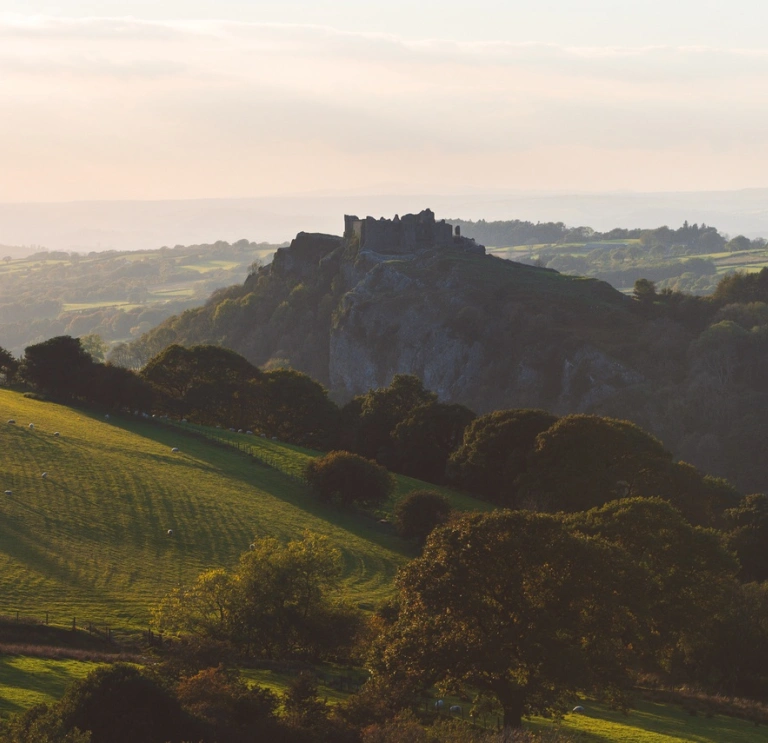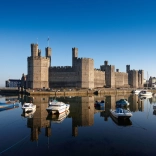Hundreds of Welsh myths and legends have been passed down through the centuries. Many tell the stories of real people, others have mythical roots, but all are entertaining. I've spent four years and had great fun exploring them. Let me introduce you to a few which I have enjoyed researching.
It's a well trodden path
In the 19th Century, the Reverend Elias Owen was a school inspector travelling across Wales. After each school visit he would ask to be taken to meet the oldest person in the village, often setting out with a small lantern to some remote cottage, late at night in foul weather. His purpose was to collect the ancient stories that had been passed down by word of mouth and write them down before they were forgotten. He presented his essays in 1887 at the National Eisteddfod in London where they won a silver medal and a £20 prize. Elias Owen continued writing and, in 1896, published Welsh Folk-Lore - A Collection of the Folk-Tales and Legends of North Wales.
King Arthur - Welsh warrior and folk hero
Owen wasn't the first to write down the ancient stories. Geoffrey of Monmouth's book The History of the Kings of Britain published in 1136 gave us King Arthur and the magician Myrddin, also known as Merlin, from the Welsh town of Carmarthen. The Welsh language Black Book of Carmarthen written in the 13th Century, so named because of the colour of its binding, tells of the same great warrior and folk hero named Arthur. The book is one of the earliest surviving manuscripts written solely in the Welsh language, and is housed at the National Library of Wales in Aberystwyth, Mid Wales. You can read more about King Arthur on my King Arthur page.
The poems and stories contained in the Black Book of Carmarthen also speak of other Welsh characters of legend. Within the beautiful vellum pages can be found Gwyn ap Nudd, Lord of the Underworld. He lived in the mountains of Cadair Berwyn, and Moel Sych was his throne. His was a cold, barren kingdom filled with foul swamps, evil vipers and devils. This was the land of the dead, a dangerous desolate place seldom visited by mortals.


Cantre'r Gwaelod - The Lost Land of Wales
Other verses relate the story of Seithenyn and the drowning of Cantre'r Gwaelod, a wealthy kingdom ruled by King Gwyddno Garanhir. Seithenyn's love of wine, food and a good party led to the destruction of the kingdom as it vanished beneath the waves of what is today called Cardigan Bay. At low tide it's still possible to see the fossilised stumps of trees, said to be from Cantre'r Gwaelod, on the beach in the village of Borth, Mid Wales. There's more about this legend on the BBC Wales History website.

The Spirit of Llandegla
Nearly every town, village, castle and lake has a legend to tell. Take the village of Llandegla, North Wales, where village children still snip branches off a tree to make sure a spirit buried in the riverbed below is kept secure inside his wooden prison. You can read more about this story on my Spirit of Llandegla page.
Owain Lawgoch
Further south a majestic castle stands proud on a cliff in the Black Mountains. Carreg Cennen Castle is, it is said, the resting place of a Welsh prince. The legend of the sleeping prince has been retold many times but Owain Lawgoch (Owain of the Red Hand) was no legend. He was born Owain ap Thomas ap Rhodri (Owain son of Thomas and grandson of Rhodri) in 14th century Wales. His lineage reaches back to Llywelyn the Great, King of Gwynedd, and he could legitimately claim the title ‘Prince of Wales’. Owain was a mercenary employed by the French. They made him a Captain General of France and planned for him to lead an invasion of England. Owain was paid 300,000 francs (£240m in today’s money) to build an invasion force. This was a serious, very well funded invasion attempt and Owain was only delayed by bad weather.
News reached the English who realised that the threat needed to be dealt with quickly. One day in 1378 Owain was outside the castle at Mortagne-sur-Gironde in France preparing to attack the English defenders. His servant, a Welshman named John Lambe, entered Owain’s tent, crept up behind him and drove a short shafted spear into his back, killing him. According to official letters from the time, now in the public records office at Kew, England, the English paid the assassin £20 to murder Owain (the pay for an archer during that period was just four pence a day). John Lambe escaped and lived in England into old age.


All of these legends (and more) can be found in my book, Welsh Legends and Myths: a collection of 80 Welsh legends and myths, gathered from across Wales.
To visit some of the finest historic locations in Wales, explore Cadw (the Welsh Government’s historic environment service, managing some of our finest ancient sites) or National Trust Wales.
For more myths and legends from across Wales, visit the Land of Legends site.




